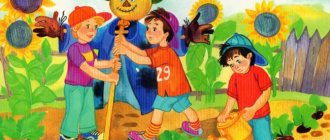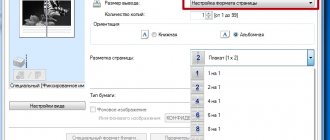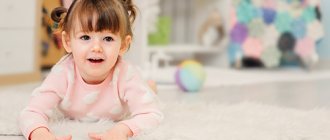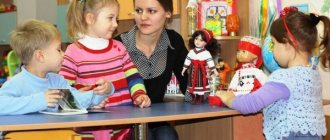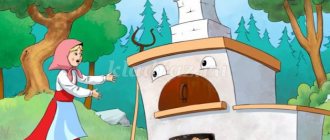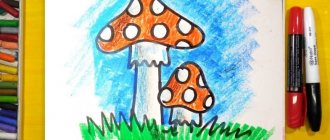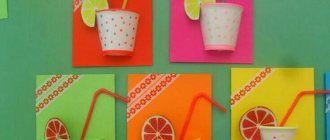The emphasis in modern education of preschool children is on developmental education. Math classes are no exception. The formation of elementary mathematical concepts develops personality, intelligence, logic and abstract thinking. It sharpens attention and memory, develops speech and promotes the most comfortable integration of the baby into the world around him. Fun math for children 3-4 years old will help develop qualities such as curiosity, goal achievement, and discipline. Introduces spatial and temporal logic.
What does mathematics teach 3-4 year old children?
Every educated parent wants to understand how well their child is developed. Are you missing any skills that are important in the modern world that you should focus on? To adequately assess children's knowledge and skills, you need to know what today's education system requires of them.
Mathematics for three-year-old children
Mathematics at 3 years old in kindergarten is not difficult. Children should:
- Master working with numbers within five. This is both an ordinal and a reverse count.
- Understand what this or that number consists of (for example, 5 is 4+1).
- When counting, use fingers, counting sticks, and other available objects.
- Correctly use the names of ordinal numbers, as well as cardinal numbers in the names of numbers.
- Recognize written numbers and be able to write them yourself.
- Name the number that comes before the given one, as well as after it.
- Use the terms “more”, “less”, “the same”. Clearly understand the difference between them.
- Master orientation in space (for example, show on a piece of notebook where the lines are higher and lower, which are on the left, right, between them, what is in the center, what is above, what is below).
For your information! Children must distinguish objects.
By size:
- Big bigger.
- Small - less.
- Short - shorter.
- Long - longer.
- Tall - higher.
- Low - lower.
- Wide - wider.
- Narrow - narrower.
Math classes
By geometric shape:
- square;
- circle;
- triangle;
- rectangle.
They must find these figures and be able to draw them, name the geometric shape of surrounding objects. Learn to identify their color. Distinguish between a circle and a ball, a square and a cube.
Mathematics for kids 2-3 years old mathematics card file (junior group)
Math for kids
Educational games for children 2, 3 years old
Teaching kids math
At the age of 2 or 3 years, the child develops elementary mathematical concepts. He is already familiar with the basic directions: forward, backward, up, down, sideways; is able to distinguish objects by size (large, small, the same), identify their multitude (one, two, many).
It is useful to have sets of identical toys, for example, wooden Christmas trees or mushrooms. Children really like ordinary nesting dolls, which can also be used for story games.
Find a match
The game develops attention, perception, ability to compare
Necessary equipment: cards with drawn paired objects, or paired toys. You can use special kits purchased in the store.
◈ Place cards (toys) in front of the child and ask him to find a suitable pair for each item.
Counting sticks
The game helps to master counting, get acquainted with geometric shapes, and the concept of symmetry.
Necessary equipment: a set of counting sticks (pencils, straws, needles).
◈ Post various pictures or stick figures with your baby - a house, a mushroom, a Christmas tree, a hedgehog, a dragonfly, flowers, a boat, an umbrella, letters. Tell your child what this or that figure is called.
◈ Counting sticks can be used to make wells (square or triangular in cross-section).
The apples are ripe
The game helps you master counting
Necessary equipment: thick colored cardboard, scissors, thread, buttons.
◈ Cut out a tree and some apples from cardboard. Sew small buttons onto the branches, and loops of the appropriate size onto the fruits. Invite your child to fasten the apples to the branches.
◈ During the harvest, the child “unfastens” the apples.
◈ From several apple trees you can make a garden by adding other trees to them, for example, pear, cherry, plum or apricot.
◈ If you have a little patience and add flowers to the apples, this material can be used to illustrate the process of fruit ripening. In this case, it is necessary to tell the child that trees first bloom and then bear fruit.
Help me harvest
The game promotes classification skills
Necessary equipment: dummies or pictures of vegetables and fruits.
◈ Arrange vegetables and fruits (or pictures with their images) mixed. Ask your child to collect and place fruits in one basket and vegetables in the other.
◈ You can then sort vegetables and fruits by type.
Two roads
The game helps develop classification skills
Necessary equipment: cardboard or paper, cars of different sizes.
◈ Cut two strips of different widths from cardboard (paper). Explain to your child that a narrow strip is a road for small cars, and a wide strip is for large cars.
◈ Show how you can determine which stripe is wider by overlapping stripes.
◈ Ask why a large car cannot drive on a narrow road.
◈ Drive your cars on the roads.
◈ By gluing strips of different widths together, you can build an entire network of roads.
Choose the road
The game promotes the development of classification skills and develops the ability to compare.
Necessary equipment: cardboard or paper, cars of different sizes.
◈ Cut two strips of different widths from cardboard (paper). Explain to your child that these are roads for cars.
◈ Ask him to choose cars for which the narrow road is suitable. And vice versa, choose a road along which this or that car can drive.
Matryoshka
The game develops fine motor skills and the skills of comparing objects by size.
Required equipment: a set of nesting dolls.
◈ Almost all children love nesting dolls.
◈ Show your child a large matryoshka doll. Shake her. Open with your child and take out a smaller doll. Put them side by side and compare.
◈ Let the child put the small nesting doll into the large one and take it out.
◈ Gradually show him all the nesting dolls.
Who is faster
The game helps to master the concepts of “long” and “short”.
Necessary equipment: two cars, ropes.
◈ Tie strings to two cars - short and long. Give your child a car with a short string.
◈ Offer to see whose car will “get” to the owner first if everyone winds their own rope around a pencil.
◈ By placing the strings side by side, clearly show what is long and short.
Slide
The game promotes the development of logical thinking.
Required equipment: cardboard or planks.
◈ Make a small slide from cardboard, planks or any other available materials.
◈ You can roll small cars, balls, and dolls down the slide.
◈ Place a cube in front of the slide and show how the rolling car stops when it hits the cube.
Building a tower
The game promotes the development of motor skills, classification, counting, and comparison skills.
Required equipment: cubes of two colors.
◈ Invite your child to build two towers of different colors, after sorting the cubes.
◈ During the construction process, deliberately make mistakes by choosing cubes of the wrong color.
Geometric figures
The game teaches you to distinguish objects by color and shape
Required equipment: five multi-colored circles cut out of cardboard.
◈ Look at one of the circles with your child, telling him: “This is a circle. It is red. What does he look like? Look for round objects in the room. ◈ Explore different colored circles.
◈ After the child has mastered the concept of “circle,” you can move on to other geometric shapes, while expanding the range of colors.
◈ Compare two identical shapes of different colors. Use the association method.
Let's figure it out
The game helps develop classification skills
Required equipment: 3 circles and 3 squares cut out of cardboard.
◈ Shuffle the shapes. Ask your child to help you select only the circles.
◈ After this, color the circles with one color and use a different color to color the squares.
One - there, one - here
The game promotes the development of fine motor skills and teaches counting.
Required equipment: two containers (buckets, boxes), cubes or small items.
◈ Place the cubes in front of the baby and place two buckets or two boxes. Invite your child to put the cubes into boxes.
◈ Taking a cube in your hand and placing it in a box, say: “One goes into this box, here’s another one into another.”
◈ When the child understands the concept of “one,” start taking two objects at a time: “I will put two cubes in this box, and please put two cubes in another box.”
Much is not enough
The game promotes the development of logical thinking and introduces elementary mathematical concepts.
Required equipment: two identical boxes, cubes of the same color.
◈ Put 10 cubes in one box, and 3 in another. Having invited your child to build a tower or a house, ask: “Please bring me a box that contains a lot of cubes.” If the child is at a loss, help him.
◈ After you have built the towers, compare which one is taller (the one with more cubes).
◈ Repeat the words “many” and “little” more often, using them in different situations.
"One step..."
The game helps you master counting
◈ When going up the stairs, count the steps. Don't ask your child to repeat after you, he will do it himself when he understands the essence of the game.
◈ Count how many apples or candies you bought, how many plates you put on the table, etc.
Geometric store
The game helps to study the shape of objects and master counting.
Necessary equipment: toys with clear geometric shapes (ball, cubes, balloons, dominoes, pyramid rings), geometric figures cut out of cardboard.
◈ Invite your child to the store. Explain that in your store toys are sold for money (which are used as geometric figures), but only if the shape of the selected toy matches the shape of the cut out geometric figure. For example, a ball can be bought for a cardboard circle, a cube for a square, etc.
◈ Then complicate the task by explaining to your child that, for example, two squares can buy two cubes.
Hide it in your palm
The game develops the ability to correlate objects by size
Required equipment: small and large balls.
◈ Give the baby some balloons. Say: “Now I’ll show you a trick!” Take a small ball and hide it in your palm. Ask your little one to do the same.
◈ Offer to repeat the trick with a large ball. Explain why a large ball cannot be hidden in the palm of your hand.
◈ Compare the balls with each other, then with the baby’s palm.
◈ Perform similar tricks with any small objects.
Hand out the plates
The game introduces the concepts of “many”, “few”, “one”, “one at a time”
Required equipment: 10 plastic plates.
◈ Give your child a stack of plastic plates. Draw his attention to the amount of dishes, using the words “a lot”, “a whole stack of plates”.
◈ Ask to distribute one plate to each family member or toy. Comment on the child’s actions: “Dad was given a plate, now dad has one plate...”.
◈ After distributing the dishes, make a conclusion: “They handed out a whole stack of dishes and everyone had one plate. Now let's put the plates back together. Look, you have a lot of plates again.”
Fungus to fungus
The game promotes the development of motor skills, teaches how to correlate quantitative sets, and helps to master the concept of “as much as”
Required equipment: 5 yellow and 5 orange mushrooms cut out of cardboard.
◈ Explain the rules to the baby: you lay out one mushroom, the baby must put his own mushroom under it. Draw your child’s attention to the fact that the figures should be laid out from left to right. This will allow the child to acquire the skills necessary in the future to write correctly. Having laid out all the mushrooms, comment: “I put 5 mushrooms, and you put 5 mushrooms. This means there are as many of your mushrooms as mine, they are equally divided.”
◈ Instead of cut out mushrooms, you can use cubes of two colors or any other toys that can be divided into two parts.
Pick a lid
The game develops the skills of classifying and matching objects
Required equipment: pots with lids.
◈ Children enjoy spending time with their mother in the kitchen.
◈ While you are cooking, tell your child that you got the lids mixed up and now you don’t know which lid is for which pan.
◈ Ask your child to help you choose the right size lids.
Grandma's pancakes
The game promotes the development of matching skills, the ability to systematize objects according to a certain criterion
Necessary equipment: 4 circles cut out of paper with a diameter of 3 cm, 4 circles with a diameter of 6 cm, a box for large circles, a box for small circles.
◈ Come up with a plot for the game. For example, my grandmother baked pancakes, large and small. Big ones for mom and dad, small ones for the grandchildren. But all the pancakes got mixed up. We need to help grandma put the pancakes on plates.
Counting and numbering numbers
The teacher’s task is to understand whether children understand the ultimate purpose of counting and why they are doing it.
Mathematics for children aged 3-4 years has its own characteristics. It is necessary to direct their attention to the study of a serious subject. For this purpose, all kinds of auxiliary materials and presentations are used.
Studying figures in preschool educational institutions
Fairy tales, toys, cubes, pictures (characters from fairy tales and cartoons printed on a color printer will be excellent handouts), lapbooks will also come in handy. They are easy enough to make yourself.
Children must master the names of numbers. But often they do not project this knowledge onto what concerns them. For example, a child knows ordinal counting perfectly, but cannot count his fingers. He simply doesn't connect the two.
Important! The teacher’s task is not only to give the concept of numbering and counting, but also to connect these things with the real world in the child’s mind.
Card index of theatrical games with goals in preparatory groups
Math exercises
Additional material will be required for math classes. The preschool educational institution recommends “Igrachka” by L. G. Peterson. This teaching aid is intended for use in mathematics lessons for 3-year-olds in kindergarten. These notebooks can be purchased online. It is also recommended to use the technique of E.V. Kolesnikova.
Educational cards
Math for a 3-year-old child begins with pictures. Five cards are made with the numbers 1, 2, 3, 4, 5.
You need to prepare pictures of the same color, but different objects. For example:
- Blue color – car, ball, flower, umbrella, etc. (all the same color).
- Red color – car, ball, pencil, umbrella, etc.
- Yellow color – car, ball, ball, spoon, etc.
- Green color – car, ball, flower, umbrella, etc.
- Black color – car, ball, pencil, umbrella, etc.
- White color – car, ball, flower, umbrella, hare, etc.
This will gather a working presenter to study the initial account. The objects in the pictures must be of different sizes.
Tasks:
- Find all red cards. Find and name each picture.
- Find all yellow cards. Find and name each picture.
- Find all blue cards. Find and name each picture.
- Find all green cards. Find and name each picture.
- Find all black cards. Find and name each picture.
- Find all white cards. Find and name each picture.
After the children have completed the task, you can move on to the next stage.
Further tasks become more difficult. You need to select all the cards where the car is drawn. All cards with a ball on them.
For your information! Having different colors is very confusing for children at first.
Comparison "More-less"
Mathematics for a 3-year-old child, which takes place in a preschool educational institution, includes the study of comparisons. The concepts of “more” and “less” are explained to children. A set of cards from previous lessons is used:
- Find all the cards with a ball on them. Then find all the cards where an umbrella is drawn. Compare the number of cards. Find which drawings there are more.
- Find all cards with a drawn flower. Then find all the cards with a drawn car. Find which pictures are smaller.
For clarity, you can put together a picture with a car and a flower. Which pictures will be left without a pair, those and more. The ones that ended earlier are smaller.
Studying the concept of “The same amount”
At the beginning of the lesson (if someone is celebrating their fourth birthday), the parents of the birthday boy brought cake and sweets. How to determine how much sweets each child needs without using numbers? Children express their suggestions.
The term “same” is introduced. The guys practice learning a new word. Problems with similar terms are solved:
- Also;
- equal quantity;
- the same.
How we play math
We have been playing math games with our children since early childhood, from the age of 3. The first was the game “Kitten's Journey”.
My son picked up a toy kitten, we sat down in front of the globe, and the journey began. We imagined that a fast train was rushing a kitten from our city across the entire continent, and tried to imagine the pictures that the kitten sees. Along the way, the kitten had to draw a path through a maze, or collect precious stones in a cave, or help a little beaver build a house. Of course, our son helped the kitten complete the proposed tasks. Sometimes we “boarded” into a rocket and flew to the stars, exploring them, the planets and space itself. Sometimes we shrank down to microscopic size and traveled through the blood vessels of the human body, studying the composition of the blood and the location and properties of the body's organs. The son grew, the tasks became more complicated. His next favorite game was Lego Programming. We drew labyrinths through which, by issuing commands “forward”, “backwards”, “right”, “left” with four colors of Lego blocks, we had to guide a robot or car. At the same time, there were many games for classification and sorting of objects.
Then a math club was organized for children aged 4-6 years old - we spent two years together playing and learning new things. Then our daughters were born, after them new games appeared and the old ones were enriched. Finally, we collected what we had accumulated over ten years of study into a book. Each chapter begins with a story about how dad or mom play with their children - Kolya and Katya. You can discuss the games from the story with your child, you can play them, or you can complete the tasks suggested at the end of the chapter.
Here are some games from this book.
Four cars
An example of a visual game for sorting objects by color.
- Dad, I'm bored! Play with me! - Kolya called his father. - Fine. What are we going to play? - In Lego. - Amazing. Would you like me to show you something interesting? - Dad sat down opposite Kolya and poured out all the Lego between them. Then dad took four trucks from the shelf and suggested: “We have Lego parts in four colors.” Let's arrange them among the cars: the first one will carry red parts, the second one will carry blue parts, and the next two will carry yellow and green parts. We will take the parts to the other end of the room and there we will build four garages from them: red, blue, yellow and green.
Robot in the maze
This game is aimed at developing algorithmic thinking. This is how we learn to solve complex problems using a sequence of simple actions.
- Kolya, imagine that you are a robot. Stand here, on the arrow showing the entrance to the labyrinth. You should only walk when you hear the command, and take one step at a time in the direction indicated to you. Katya will manage you.
The guys were happy and agreed. Then dad put Kolya in front of the entrance to the maze, and Katya next to Kolya, and said that the robot only understood simple commands: forward, backward, right and left; and that at each command he takes a step in the indicated direction and freezes, waiting for the next command. And that he cannot enter squares on which there are obstacles.
Multi-colored candies (logic problem)
Mom: - I bought you three candies: green, red and yellow. For Katya - not green, for Kolya - not yellow, for dad - neither red nor green. Guess which candies I bought for whom.
About counting on fingers
At the first stage of learning to count on fingers, you need to firmly grasp all possible combinations. The child should not think about the answer within one hand.
Visual gymnastics classes for children in preschool educational institutions
Attentiveness and memory develop, including tactile memory, because counting takes place in the head. You have to hold several data in memory at the same time. A quick solution depends on intelligence and speed of perception.
Child counts on fingers
Before learning to count on fingers, the child is already familiar with the concepts of “more,” “less,” and “also.” Can count objects in order within five.
Further:
- You need to start with 1+1=2. Children put two fingers together and get 2.
- Then add another finger = 3.
- Add one more to three and get the fourth result (four).
- Add one more finger to four and get five.
Now you can master subtraction:
- Subtract one finger from five and it becomes four.
- Subtract one finger from four and it becomes three.
- If you take away one finger from three, there will be two left.
- Subtract one finger from two and one remains.
The lesson should not exceed 20 minutes. Children get tired quickly. You can diversify the lesson by changing activities - warming up, singing something, solving riddles, and so on.
Important! You can't force it. It is always easier to “lure” someone somewhere than to force them. Elements of play, competition and reward will do more and better than anything else.

